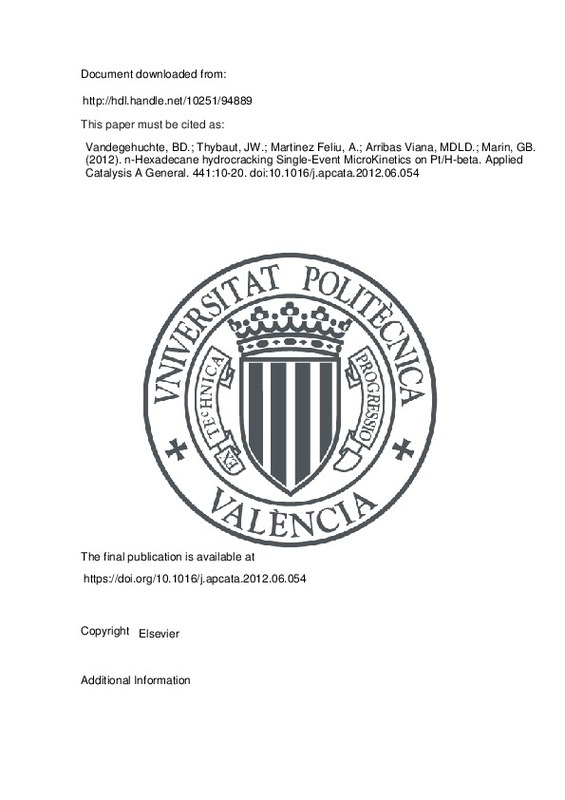JavaScript is disabled for your browser. Some features of this site may not work without it.
Buscar en RiuNet
Listar
Mi cuenta
Estadísticas
Ayuda RiuNet
Admin. UPV
n-Hexadecane hydrocracking Single-Event MicroKinetics on Pt/H-beta
Mostrar el registro completo del ítem
Vandegehuchte, BD.; Thybaut, JW.; Martinez Feliu, A.; Arribas Viana, MDLD.; Marin, GB. (2012). n-Hexadecane hydrocracking Single-Event MicroKinetics on Pt/H-beta. Applied Catalysis A General. 441:10-20. doi:10.1016/j.apcata.2012.06.054
Por favor, use este identificador para citar o enlazar este ítem: http://hdl.handle.net/10251/94889
Ficheros en el ítem
Metadatos del ítem
| Título: | n-Hexadecane hydrocracking Single-Event MicroKinetics on Pt/H-beta | |
| Autor: | Vandegehuchte, Bart D. Thybaut, Joris W. Marin, Guy B. | |
| Entidad UPV: |
|
|
| Fecha difusión: |
|
|
| Resumen: |
[EN] The Single-Event MicroKinetic (SEMK) model constructed for gas-phase hydroconversion of light n-alkanes on large-pore USY zeolites was applied, for the first time, to the hydrocracking of n-hexadecane on a Pt/H-Beta ...[+]
|
|
| Palabras clave: |
|
|
| Derechos de uso: | Reserva de todos los derechos | |
| Fuente: |
|
|
| DOI: |
|
|
| Editorial: |
|
|
| Versión del editor: | https://doi.org/10.1016/j.apcata.2012.06.054 | |
| Código del Proyecto: |
|
|
| Agradecimientos: |
This work was funded by the European Research Institute of
Catalysis and the European Community’s Sixth Framework Programme. This work was also supported by the Research Board
of Ghent University (BOF), the Interuniversity ...[+]
|
|
| Tipo: |
|







![[Cerrado]](/themes/UPV/images/candado.png)


